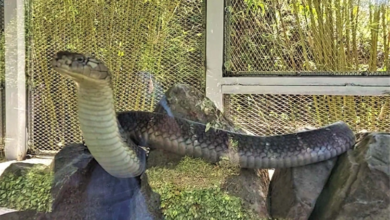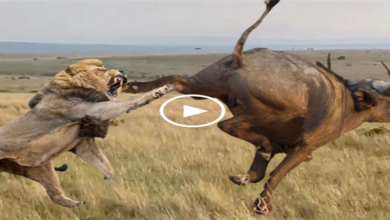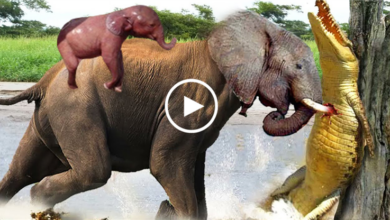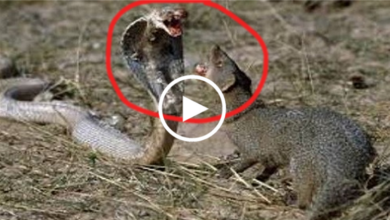Heartbreaking study finds male snub-nosed monkey spent an hour with his dying mate – and even held her hand as she passed away
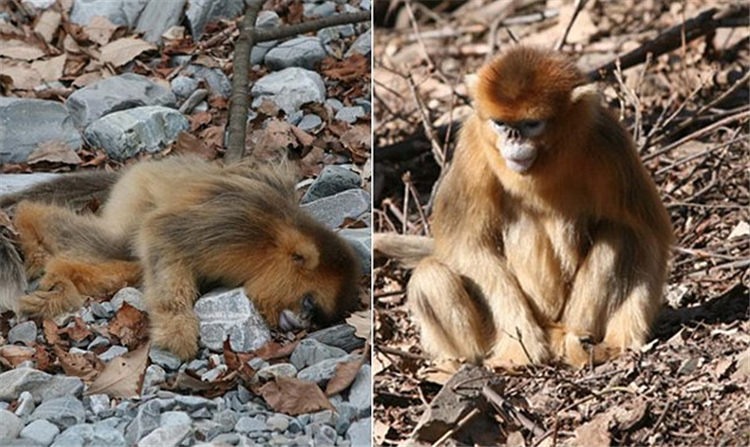
A male snub-nosed monkey looked back at the spot where his partner lay dead; he’d spent more than an hour by her side, gently grooming and tugging on her hand in the final moments.
It was a rare occurrence witnessed by researchers studying snub-nosed monkey populations in China, and they say this may be one of the first examples of grief in the wild.
While the researchers caution against anthropomorphizing, they say this unusual observation may be an example of empathy and compassion in the face of death.
It’s long been speculated that humans might not be the only species to have a conceptual understanding of death, and in a new paper published to Current Biology, researchers argue that some animals may even be capable of grieving.

The heartbreaking sequence of events occurred during research on a group of roughly 150 snub-nosed monkeys at the Zhouzhi National Nature Reserve in Shaanxi province, China.
While observing a particular subgroup, the researchers noticed one female who appeared to be weak and isolated from the rest, and had begun to bleed from the nose, New Scientist reports.
The group was made up of just three other adult females, two juveniles, and two infants, along with the single male who they’ve called ‘ZBD.’
At around 1 p.m., ZBD approached the female, referred to as ‘DM.’
He touched her hand, and made warning calls to the others to stay away.
The pair climbed a tree together thirty minutes later, and sat high on a branch 25 meters above the ground, where ZBD groomed and gazed at his partner.
But half an hour later, she suddenly fell, cracking her head on a rock, according to New Scientist
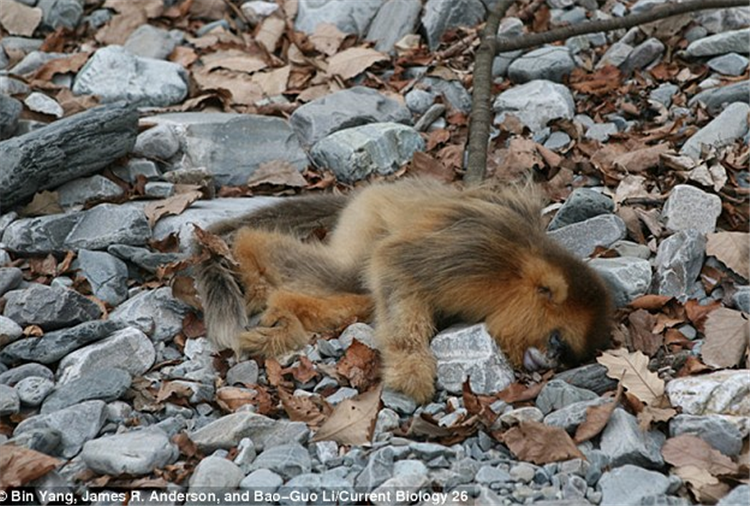
At around 1 p.m., ZBD approached the female, referred to as ‘DM.’
He touched her hand, and made warning calls to the others to stay away.
The pair climbed a tree together thirty minutes later, and sat high on a branch 25 meters above the ground, where ZBD groomed and gazed at his partner.
But half an hour later, she suddenly fell, cracking her head on a rock, according to New Scientist
When juveniles or infants made attempts to approach the fallen monkey, ZBD made warning calls causing them to leave.
The team witnessed the alpha male embrace the injured female, while uttering alarm calls.
At 3:35 p.m. DM stood up to follow the group, but collapsed and died.
The male remained with his partner for another five minutes after she had succumbed, then left to join the rest of the group by the river 50 meters away.
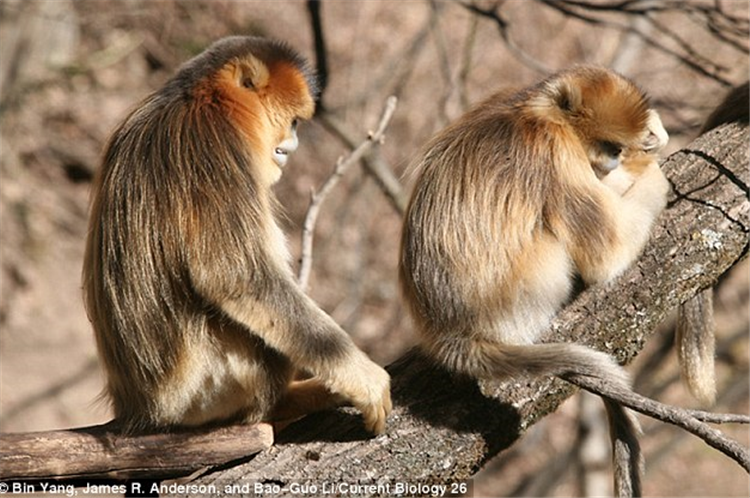
For five minutes, ZBD sat near the river and looked back toward the area where her body lay, the researchers wrote.
The researchers later buried the monkey’s body, and one day later, the group returned to the spot where she had died, according to New Scientist.
For at least two minutes, ZBD was observed sitting and looking for his partner before moving on.
The female monkey had joined the group three years earlier, and researchers suggest that her death had an emotional impact on the alpha male.
‘The case we’ve reported is particularly important because of the exclusively gentle nature of the interactions, and the special treatment of the dying female shown by the adult male,’ James Anderson of Kyoto University, Japan, told New Scientist.
‘The events suggest that in the case of strongly bonded individuals at least, monkeys may show compassionate behaviour to ailing or dying individuals.’
Similar behaviours have been seen in other animals, including great apes, and researchers argue that ‘empathy and compassion surrounding death extend beyond humans and their closest evolutionary relatives.’

